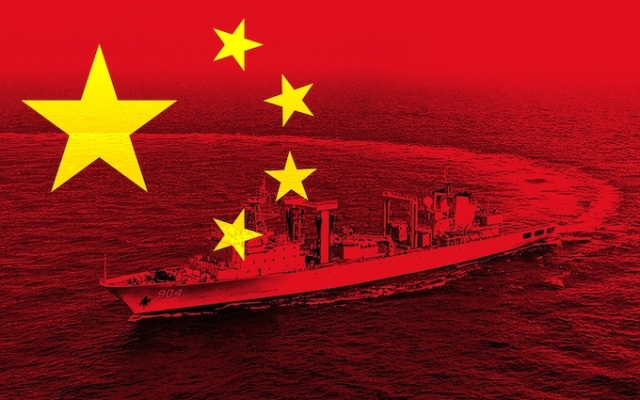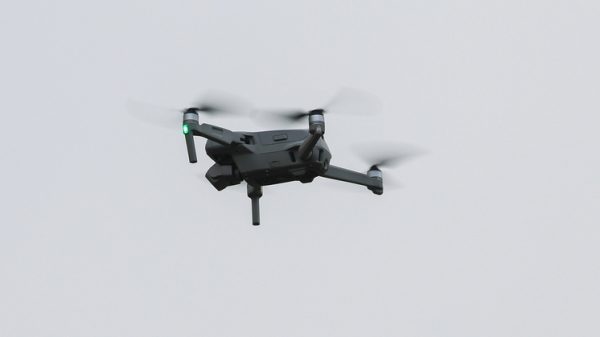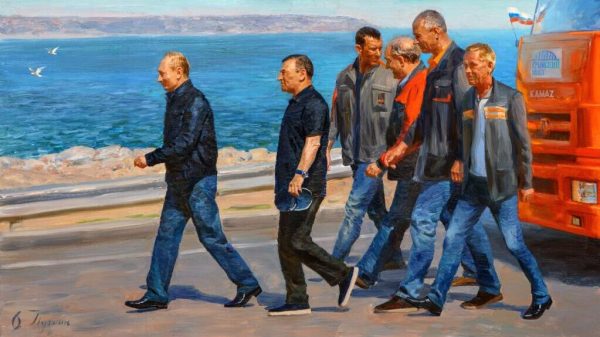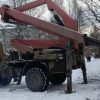 South China Sea and China's flag
South China Sea and China's flag
China prepares an armada of ferries and civilian ships to invade Taiwan as Beijing strengthens pressure campaign against the island state.
Although the People's Liberation Army (PLA) lacks the number of landing craft needed to mount an invasion like the one seen during the D-Day landings, it could close the gap with civilian vessels, including dozens of giant rolling ferries, each which can carry hundreds of armored vehicles.
“Landing under fire is one of the most complex military maneuvers,” said Ray Powell, director of SeaLight, a Stanford University project focused on gray zone operations in the South. China Sea.
Civilian ferries «would generally be a poor choice for such a mission» but could be used to move troops en masse across the Taiwan Strait after its coastal defenses have been destroyed, or to overwhelm the island's military with «sheer mass,» he said.
Beijing on Thursday began two days of military drills in the waters around Taiwan in what it said was «severe punishment» for «separatist actions» after a fiery inauguration speech in Taipei earlier this week by Lai Ching-te, who was brought sworn in as president for a term of four years.
This was the third set of exercises around the island in the last two years.
«We urge China to exercise restraint and stop undermining peace and stability in the Taiwan Strait and beyond,» Taiwan's Foreign Ministry said.
China believes democratic Taiwan has pledged to take control of the island, possibly by force, and US intelligence believes Xi Jinping has ordered the PLA to be ready to seize the island by 2027.
Meanwhile, Taipei must respond to a so-called «grey zone» campaign that includes frequent cyberattacks, regular incursions into its airspace by military aircraft and harassment by Chinese vessels in its waters.
>
Taiwan's military is significantly smaller. than China, but they are protected by formidable mountainous terrain and the treacherous 110-mile Taiwan Strait.
The Chinese navy already has the world's largest surface fleet, and it has also built dozens of dual-purpose ships capable of operating in both peacetime and war.
Ten years ago, Beijing issued technical instructions for shipbuilders that will enable many of its civilian ships to be suitable for military use, and Beijing has integrated its ferries, tankers and container ships into its military command structure, the US report suggests. China Institute of Maritime Research at the Naval War College.
Ferries go to the army
China's state media have touted these efforts for years, regularly praising the ferries' participation in maritime landing exercises, and broadcaster CCTV praising the 135-metre Bang Chui Dao after it «joined the army» for military exercises in 2019, or 164 Bohai Pearl is about a meter long in 2021, which the Global Times said would be a good complement for “large-scale troop transport in amphibious missions,” citing an anonymous Chinese military expert.
Another Chinese shipping news service gushed. over Chiang Da Long, a civilian ferry that is large enough to carry enough heavy tanks and other equipment to fill two motorized rifle battalions, writing that it «dresses in a civilian shell, but has a military heart!» >Tom Shugart, an analyst at the Center for a New American Security, estimated in 2022 that China's civilian ships could significantly increase the tonnage of military equipment that can be carried by existing military amphibious ships, giving it the ability to carry about 300,000 people. troops and their equipment crossed the Taiwan Strait in about 10 days.
«Both the Taiwanese and US intelligence communities should start monitoring China's key civilian vessels the same way they monitor its naval ones. courts,” he wrote on the website. time.
While the idea of outfitting passenger ferries for use in a conflict zone may seem unusual, it reflects the extent to which China's private sector is tied to the ruling Communist Party and the military policies of the government in Beijing.
It also makes defense planning much more difficult, analysts say.
“Civilian ferries are part of a broader Chinese concept of civil-military fusion, in which civilian assets and capabilities are integral to the entire country's efforts in national security,” said Alessio Patalano, professor of East Asian war and strategy in the Department of War Studies at King’s College London.
“The inclusion of these assets represents a significant complicating factor for those who need to think about how to solve the problems of their use.”
But while it may be difficult to say whether the Movement passenger ferries are part of preparations for war, China's broader intentions are clear, he added.
“There is nothing hidden about China's military buildup,” he added.




















































Свежие комментарии